Abstract
In the fall of 1981 the San Francisco Bay Area Regional Poison Control Center received more than 100 calls regarding wild mushroom ingestion. Ten cases, including three fatalities, had all the features of Amanita phalloides poisoning. Encephalopathy, coma and renal insufficiency occurred in all three patients who died, but did not occur in those who survived. Two of the three patients who died arrived at the hospital late in the course of their illness, and severe gastroenteritis with accompanying dehydration probably contributed to their deaths. The poison control center promoted public awareness of the mushroom hazard through newspaper and television stories and by notifying local health departments. It also has devised a simple form to improve the quality of data collection and to assist in later verification of suspected A phalloides poisoning.
Full text
PDF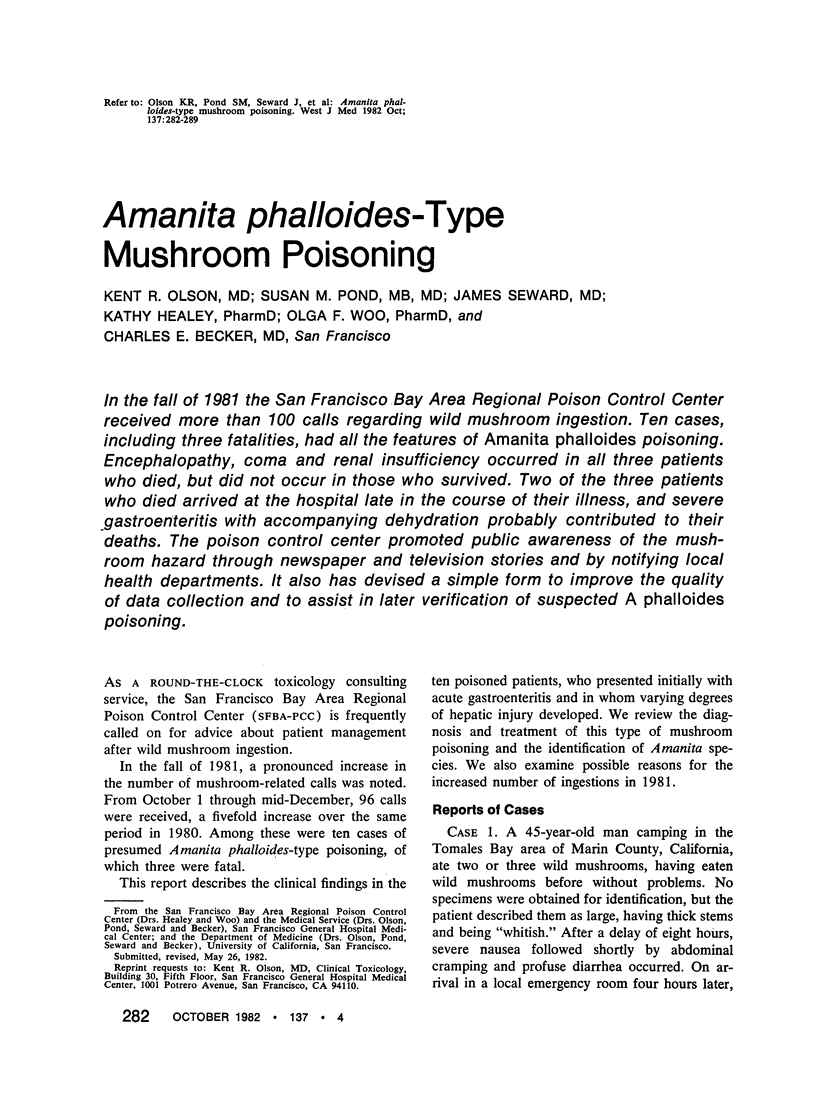
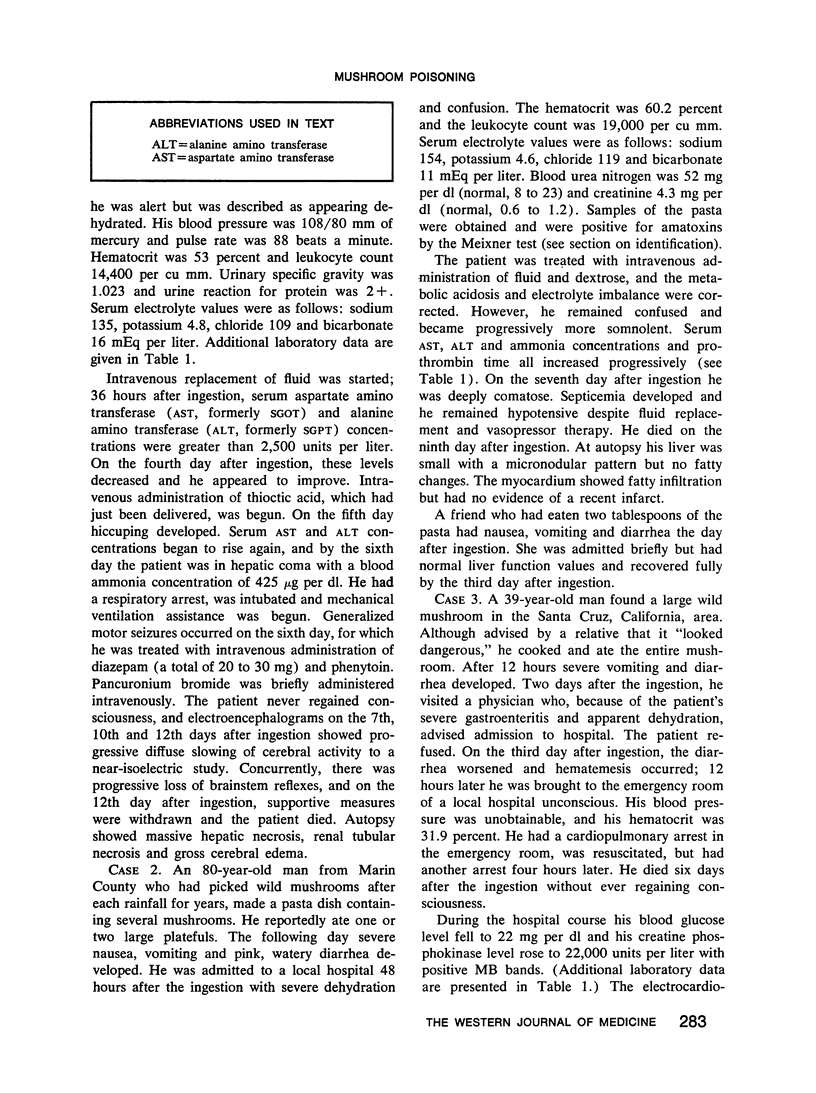

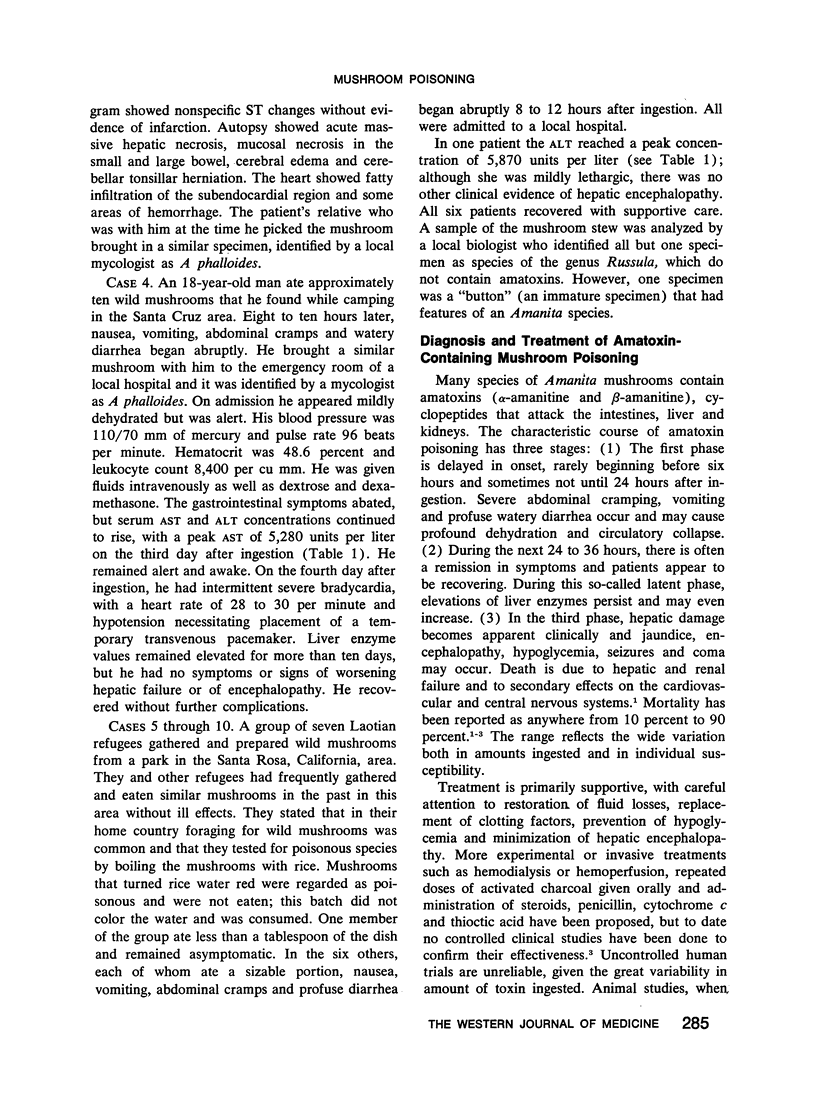
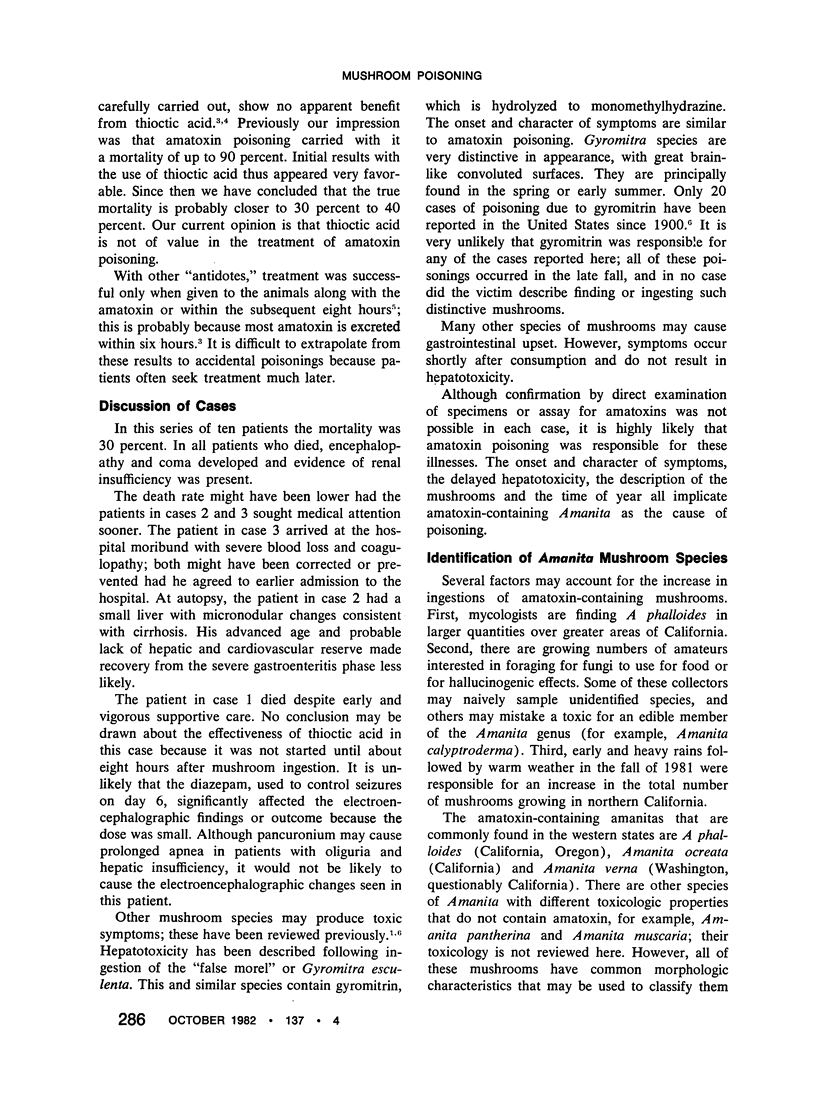
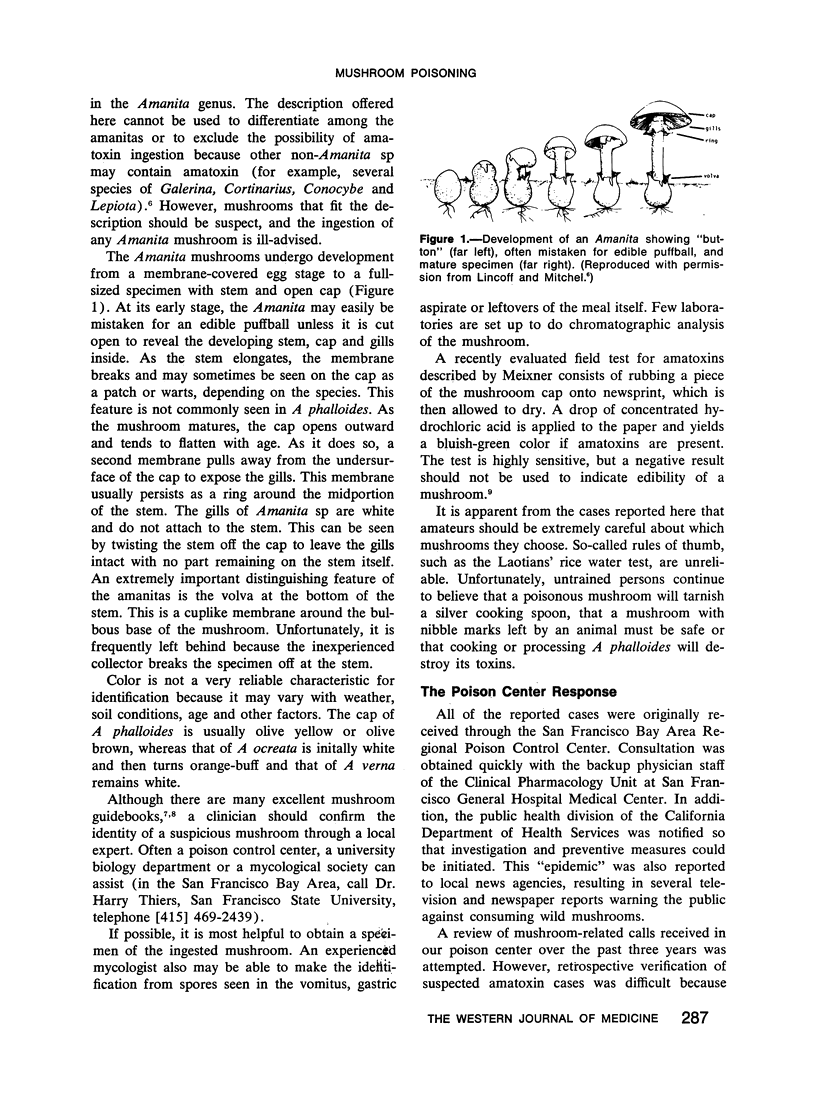
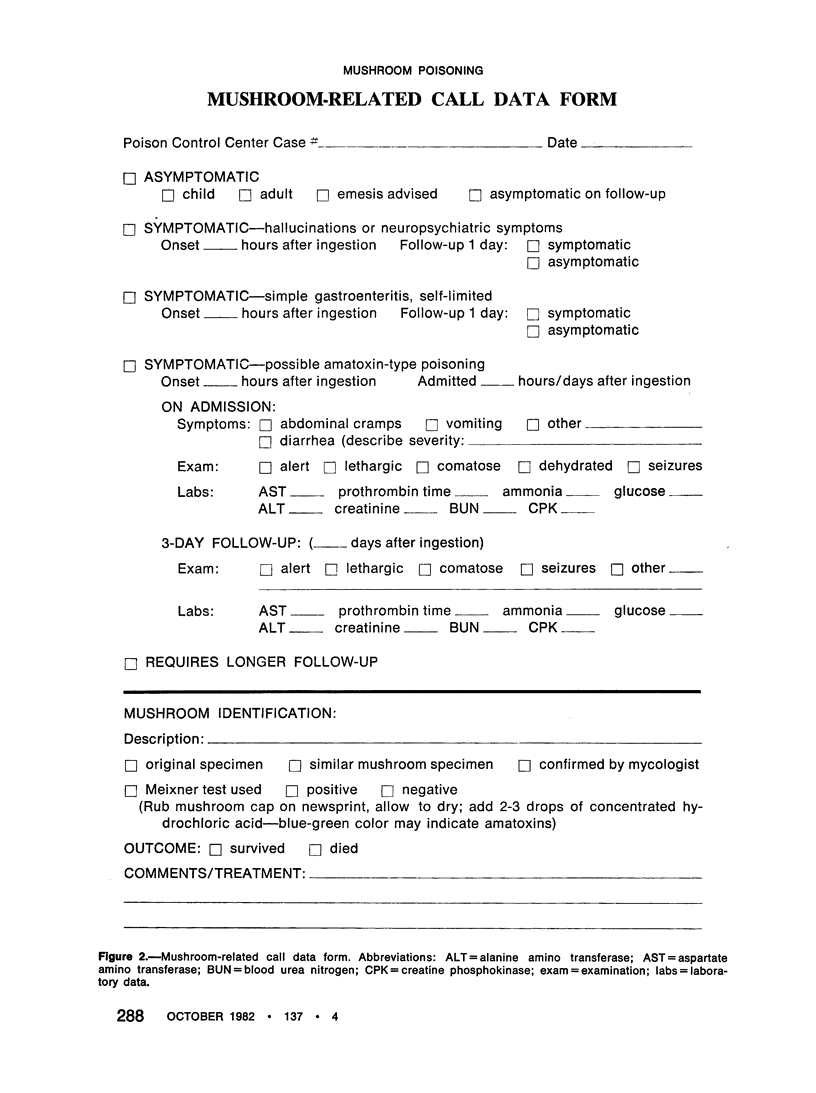
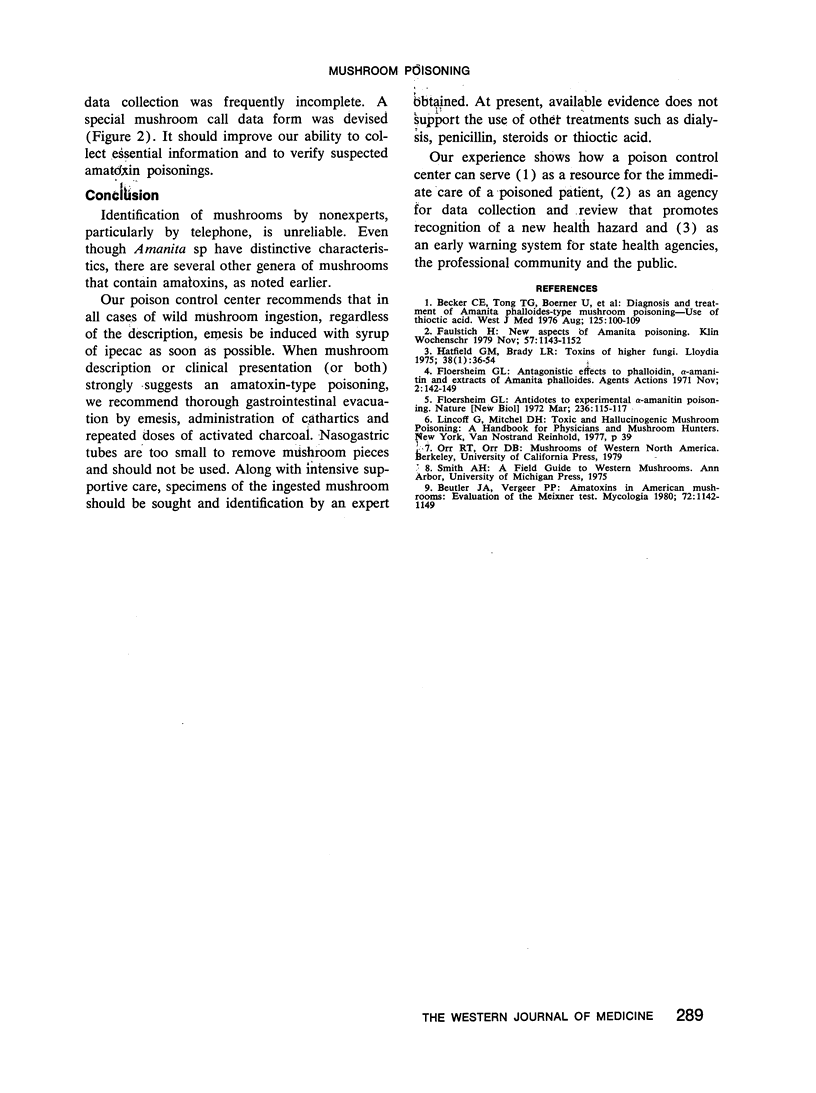
Selected References
These references are in PubMed. This may not be the complete list of references from this article.
- Becker C. E., Tong T. G., Boerner U., Roe R. L., ScoTT A. T., MacQuarrie M. B., Bartter F. Diagnosis and treatment of Amanita phalloides-type mushroom poisoning: use of thioctic acid. West J Med. 1976 Aug;125(2):100–109. [PMC free article] [PubMed] [Google Scholar]
- Brady L. R. Toxins of higher fungi. Lloydia. 1975 Jan-Feb;38(1):36–56. [PubMed] [Google Scholar]
- Faulstich H. New aspects of amanita poisoning. Klin Wochenschr. 1979 Nov 2;57(21):1143–1152. doi: 10.1007/BF01491754. [DOI] [PubMed] [Google Scholar]
- Floersheim G. L. Antagonistic effects to phalloidin, alpha-amanitin and extracts of Amanita phalloides. Agents Actions. 1971 Nov;2(3):142–149. doi: 10.1007/BF01966753. [DOI] [PubMed] [Google Scholar]
- Floersheim G. L. Antidotes to experimental -amanitin poisoning. Nat New Biol. 1972 Mar 29;236(65):115–117. doi: 10.1038/newbio236115a0. [DOI] [PubMed] [Google Scholar]


